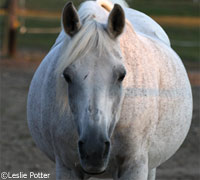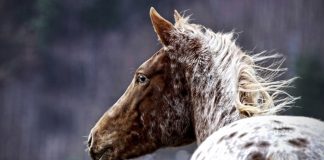 Ever been told that your horse has a hay belly and needs to lose weight? Well, relax! He’s not fat, he just has gas. In fact, gas production is normal and healthy. It indicates that your horse is getting enough hay for hindgut microbial fermentation to occur. A distended abdomen is often referred to as a “hay belly” to describe an overweight horse, even when the rest of his body is normal, but fat does not accumulate extensively on the horse’s lower abdomen (belly).
Ever been told that your horse has a hay belly and needs to lose weight? Well, relax! He’s not fat, he just has gas. In fact, gas production is normal and healthy. It indicates that your horse is getting enough hay for hindgut microbial fermentation to occur. A distended abdomen is often referred to as a “hay belly” to describe an overweight horse, even when the rest of his body is normal, but fat does not accumulate extensively on the horse’s lower abdomen (belly).
Horse owners who deliberately limit hay consumption and replace it with cereal grain to avoid a hay belly are doing their horses a disservice, and increasing the risk of colic and laminitis. Forage should be the foundation of any horse’s diet. It is vital for the health of the hindgut microbes, and hence, the health of your horse.
For more equine nutrition information from Dr. Getty, visit GettyEquineNutrition.com
Further Reading
All About Hay
Match Feed with Need






Looks like she could pop.
Should you be concerned about getting rid of the gas? How do you get rid of the “hay belly”?
Picture looks like my horse when I bought her 23
yrs ago, that after 7 yrs of being a serogant mother for some prize Arabians. Since then, she’s sleek and FAST. Even at 35+ yrs, she the one that plays the most in the pasture.
In other words, hay bellies are fine! My horse gets one when he eats but by morning it’s always gone.
Always wondered what caused it.
Good to know, thanks for the info!